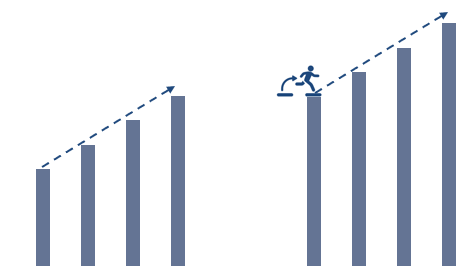A Full-stack Developer in the fintech (financial technology) industry builds and maintains the software applications that facilitate financial services. These developers have expertise in both front-end (user interface) and back-end (server-side) development, making them versatile contributors to the entire software development lifecycle.
Here’s a breakdown of their role:
1. Developing User-Facing Financial Applications (Front-end)
- User Interface (UI): Full-stack developers design and implement interfaces that allow users to interact with financial services. This could include banking apps, investment platforms, digital wallets, payment systems, or trading platforms.
- User Experience (UX): They ensure that the design is intuitive and user-friendly, critical in fintech where customers need quick and easy access to their financial data and transactions.
- Technologies Used: Front-end languages like HTML, CSS, JavaScript, and frameworks like React, Angular, or Vue.js.
2. Backend Development (Server-Side)
- APIs and Database Management: Full-stack developers handle the back-end logic, including working with APIs that integrate with third-party financial systems, payment gateways, or databases. They manage the database interactions, storing and retrieving data securely.
- Transaction Handling: They ensure that transactions (e.g., payments, wire transfers, or stock trades) are processed securely and efficiently. This often requires dealing with complex data structures, managing large volumes of data, and ensuring high availability.
- Security: In fintech, security is paramount due to the sensitive nature of financial data. Full-stack developers are responsible for implementing encryption, authentication, authorization, and other security measures (e.g., OAuth, 2FA, etc.).
- Technologies Used: Server-side programming languages like Node.js, Python, Java, Ruby, or PHP. They also work with databases like MySQL, PostgreSQL, or NoSQL solutions like MongoDB.
3. Integration with Financial APIs and Third-Party Services
- Payment Gateways: Full-stack developers integrate payment processors like Stripe, PayPal, or Square into fintech applications for online transactions.
- Banking APIs: With the rise of Open Banking initiatives, full-stack developers work with APIs from banks and other financial institutions to enable features like account aggregation, real-time transactions, or instant payments.
- Data Aggregation: They often work with third-party financial data providers (e.g., for stock quotes, currency exchange rates, credit scores, etc.) to bring live data into their applications.
4. Ensuring Compliance with Financial Regulations
- Regulatory Requirements: Full-stack developers in fintech must ensure that the applications comply with local and international regulations such as GDPR, PCI-DSS (Payment Card Industry Data Security Standard), and AML (Anti-Money Laundering).
- Data Privacy: Given the sensitivity of financial data, developers need to ensure data privacy and work with encryption standards to protect customer information.
5. Performance Optimization
- Scalability: Fintech applications often need to handle large volumes of data and traffic, especially during high-activity periods like trading hours or payment deadlines. Full-stack developers optimize performance to ensure systems can scale efficiently and maintain low latency.
- High Availability: They work on ensuring that the platform is always available with minimal downtime, which is crucial for financial services where downtime can result in significant losses or regulatory penalties.
6. DevOps and Continuous Integration/Continuous Deployment (CI/CD)
- Full-stack developers in fintech often contribute to the DevOps pipeline, managing deployments, version control (e.g., Git), and automated testing to ensure that the software is stable and secure. CI/CD helps to streamline the process of deploying updates and bug fixes while minimizing the risk of introducing errors in a production environment.
7. Collaboration with Other Teams
- Product Managers and Designers: Full-stack developers work closely with product managers to define features and functionalities that meet the needs of users. They collaborate with designers to ensure that the UI aligns with the overall product vision.
- Business Analysts: They work with analysts to ensure that the platform provides the necessary financial services, such as compliance with taxation rules or integration with existing financial tools.
8. Continuous Learning and Innovation
- Fintech Trends: The fintech landscape evolves rapidly, and full-stack developers must stay updated on the latest trends, such as Blockchain, Artificial Intelligence (AI), Robo-Advisors, and Cryptocurrency technologies.
- Innovative Solutions: They often explore new solutions for automating financial processes, improving customer experience, and creating more efficient platforms, all while maintaining security and regulatory compliance.
Key Skills for a Full-Stack Developer in Fintech
- Programming Languages: JavaScript (React, Node.js), Python, Java, Ruby, PHP
- Database Management: SQL (MySQL, PostgreSQL), NoSQL (MongoDB)
- APIs: RESTful APIs, WebSocket, financial integrations (payment systems, banking APIs)
- Security: Data encryption, authentication, and authorization protocols
- Compliance: Familiarity with GDPR, PCI-DSS, KYC, AML regulations
- Cloud Platforms: AWS, Google Cloud, or Azure for scalability and storage
- Testing & CI/CD: Knowledge of automated testing tools and DevOps pipelines
